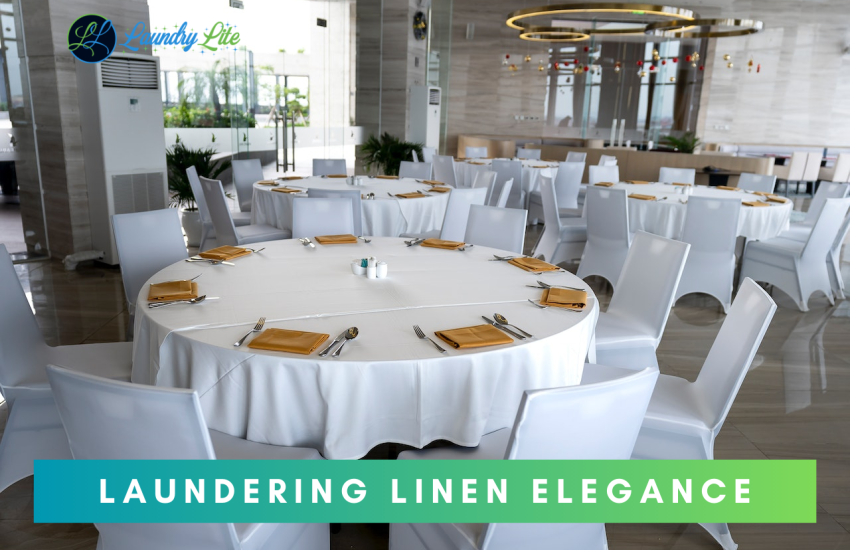A beautifully set table can instantly elevate any dining experience, and the centerpiece of this elegance is often a stunning tablecloth. Whether it’s a cherished heirloom or a recent addition to your collection, proper care and maintenance are crucial to preserving its timeless beauty. In this step-by-step guide, we will walk you through the process of washing your tablecloth, ensuring it remains fresh, crisp, and elegant for many gatherings to come.
Step 1: Check the Care Instructions
Before diving into the washing process, it’s essential to review the care instructions provided by the manufacturer. Tablecloths can be made from various materials, including linen, cotton, polyester, and blends, each requiring specific care. The care label will provide valuable information regarding water temperature, detergents, and any special considerations for your particular tablecloth. It’s crucial to follow these instructions to avoid damaging the fabric or compromising its integrity.
Step 2: Pre-Treat Stains
Tablecloths are susceptible to stains, especially during meals and celebrations. To ensure successful stain removal, it’s important to pre-treat any spots before washing. Identify the type of stain and apply an appropriate stain remover or detergent directly to the affected area. Gently rub the stain with a soft brush or cloth, working the product into the fabric. Allow it to sit for a few minutes, following the instructions on the stain remover, before moving on to the next step.
Step 3: Select the Proper Washing Method
When it comes to washing your tablecloth, you have a few options. The most common methods include hand washing, machine washing, or professional dry cleaning. Again, consult the care instructions to determine the recommended method for your specific tablecloth. If hand washing is advised, proceed to Step 4. For machine washing or dry cleaning, skip to Step 5 or Step 6, respectively.
Step 4: Hand Wash
For delicate or antique tablecloths, hand washing is often the preferred method. Start by filling a clean sink or basin with lukewarm water and a mild detergent suitable for delicate fabrics. Gently submerge the tablecloth, allowing it to soak for approximately 15 minutes. Avoid agitating or wringing the fabric, as this can lead to damage or distortion. Instead, swish the tablecloth gently through the water to loosen any dirt or residue. Rinse it thoroughly with cool water until all detergent is removed.
Step 5: Machine Wash
Machine washing is a convenient option for most modern tablecloths made from durable materials. Begin by placing the tablecloth in the washing machine, ensuring it has enough space to move freely. Use a gentle cycle and select a mild detergent specifically formulated for the fabric type. Avoid using bleach or harsh chemicals, as they can cause discoloration or weaken the fibers. Set the water temperature according to the care instructions, generally opting for cool or warm water. Once the cycle is complete, promptly remove the tablecloth from the machine to prevent excessive wrinkling.
Step 6: Professional Dry Cleaning
Some tablecloths, especially those with delicate embellishments or intricate designs, require professional dry cleaning. Take your tablecloth to a trusted dry cleaner who specializes in handling fine fabrics. Inform them about any stains or concerns you may have, and they will take appropriate measures to clean and preserve your tablecloth without compromising its beauty.
Step 7: Drying Techniques
Proper drying techniques are crucial to maintaining the elegance of your tablecloth. Regardless of the washing method you chose, avoid using a dryer, as the high heat can shrink or damage the fabric. Instead, opt for air drying. Lay the tablecloth flat on a clean, dry towel, smoothing out any wrinkles or folds. Roll the towel with the tablecloth inside, gently pressing to absorb excess moisture. Repeat this process with a fresh towel if needed. Once most of the moisture is absorbed, unfold the tablecloth and lay it flat on a drying rack or a clean surface away from direct sunlight. Allow it to air dry completely before proceeding to the next step.
Step 8: Ironing and Storing
To achieve a crisp and polished look, ironing is often necessary. Ensure the tablecloth is completely dry before ironing to prevent any moisture-related damage. Set the iron to the appropriate temperature for the fabric and gently glide it over the tablecloth, smoothing out any wrinkles. If needed, use a pressing cloth or place a clean cotton fabric over delicate areas to avoid direct contact with the iron. Take your time and be careful when ironing any intricate patterns or embroidery.
Once your tablecloth is beautifully ironed, it’s time to store it properly. Avoid folding it along the same lines repeatedly, as this can cause permanent creases. Instead, loosely fold the tablecloth and store it in a cool, dry place, such as a linen closet or a dedicated storage box. If possible, place acid-free tissue paper between the folds to prevent any color transfer or creasing.
By following these step-by-step guidelines, you can confidently wash and care for your tablecloth, preserving its elegance and ensuring it remains a stunning centerpiece for your future gatherings. With a little attention and care, your tablecloth will continue to adorn your table with timeless grace for years to come.

